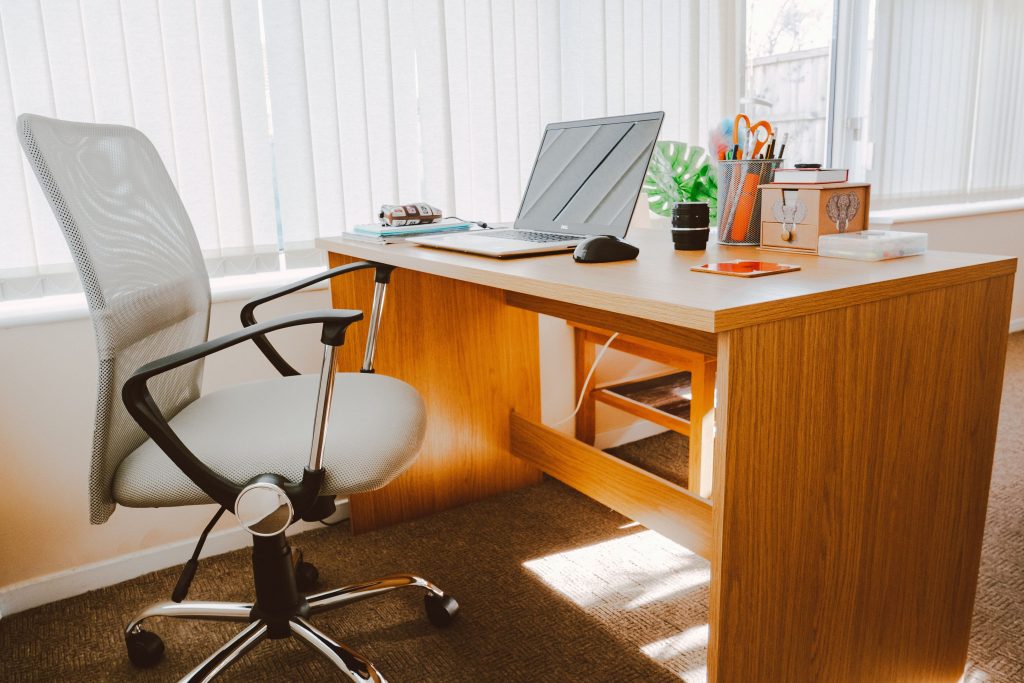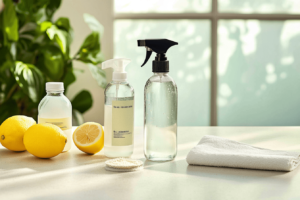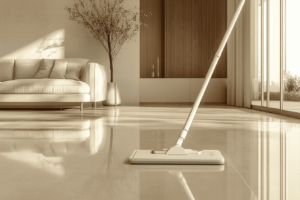If you work in an office, you know how important it is to have a clean and comfortable office chair. But most people don’t actually know how to clean an office chair!

Faulty and broken down chairs can be tough on the legs, back, and neck, which might leave you stiff and aching after a long day’s work. In fact, most doctors agree, a bad office chair directly contributes to the high rates of back pain in office workers!
The good news is that you don’t have to toss your trusty office chair away! It probably just needs a little TLC.
If you want to clean your office chair like a professional, check out these expert tips to keep your chair in top-notch condition.
Identifying Your Office Chair’s Material for Proper Cleaning
A Guide to Upholstery Care and Materials
Most office chairs have a metal structure covered with upholstery to keep you comfortable. This might be a single layer of mesh, or perhaps it’s more like an armchair with padding inside.
The metal parts are easy enough to wipe down with disinfectant spray and a towel, but the soft materials can require a bit of a different approach.
If you’re not quite sure what your chair is made of, look for an upholstery tag that should indicate the material and the cleaning instructions.
Common materials used in office chairs include nylon or polyester. These synthetic fabrics are easy to spot clean with a mild detergent and water solution.
Make sure you don’t scrub too hard, as these fabrics might tear if you rub too hard.
Usually you need to do an office deep clean every month. This can involve taking the chair apart to clean all the nooks and crannies, as well as giving it a thorough vacuuming to remove dust and dirt build-up.
Decoding Your Chair’s Cleaning Codes: A Comprehensive Guide to Proper Fabric Care
For chairs with leather material, you’ll want to use a leather conditioner instead of detergent solutions.
You should find one of the following cleaning codes; W, S, W/S or X. Here’s how to decode your optimal cleaning method:
W: This is one of the most common ones, and it stands for water. It means that your chair can be cleaned using water, or a water-based product.
S: If your chair is marked with an S, that means the fabric is dry-cleaning only. The S actually stands for solvents, which are specific cleaning chemicals typically used by professionals. Some grocery stores and craft shops will sell cleaning solvents, so you can spot treat specific areas at home – just be sure to use a hairdryer to blow-dry the area afterwards, otherwise it will leave a visible ring where the solvent was.
W/S: This means you can use either a water-based product, although some experts recommend opting for a solvent to be safe.
X: Finally, the X means that this fabric should only be cleaned by vacuuming or brushing. If you use water, a water-based product, or a solvent, you risk damaging the fabric. Luckily, this one is a lot less common!
If you have a leather office chair, you’ll also need to apply a leather conditioner every few months to keep the material soft and supple, and prevent cracking.

Removing Stains and Odours from Your Office Chair
A lot of people tend to underestimate how dirty their office chairs can get. For instance, one study showed the average office chair is home to 21, 000 germs per square inch!
How to Keep Your Chair Clean and Fresh for a Healthy Workspace
How to clean an office chair can be tricky… As with any frequently used piece of furniture, signs of wear and tear are going to accumulate over time. Spills, stains, and odours are some of the most common offenders, so it’s important to tackle them quickly.
First, make sure you’re regularly vacuuming your chair to get rid of the obvious dust, debris, lint, and pet hair that can accumulate on office chairs.
And if and when spills happen, try to treat them as soon as they occur. This can stop them settling into a stain, or causing a stink in the fabric. By looking at the fabric guide above, you’ll be able to pick the best products to care for your chair.
Effective Stain Removal Techniques: Safeguarding Your Chair
If nothing else is working, your final option is to use a specific stain removing product. But make sure you test it on a less visible part of the chair, like the underneath. That way, if it bleaches the fabric, you won’t have ruined the chair!
For extreme cases, we recommend calling in a professional cleaner to take care of it for you. That way, you can be sure that your chair is sparkling clean and fresh as ever!
Regular Maintenance to Extend Your Chair’s Lifespan
To keep your office chair comfortable and help it last as long as possible, it’s important to do some regular maintenance.
Here are a few handy DIY tips to keep your office chair good-as-new:
- If your chair has wheels, you’ve probably noticed that dust, hair, and lint can gather in them over time and stop your chair moving properly. The good news is that it’s super simple to clean these at home! All you need to do is flip your chair upside down and pull any debris out, or you could use compressed air or a small vacuum attachment.
- If your rollers are squeaky and driving you mad, you can use a little lubricant (like WD-40) to keep the wheels rolling smoothly.
- It’s a good idea to make sure any screws, nuts, and bolts are suitably tightened, so they don’t fall out over time. Just inspect the chair and wiggle any of the fasteners you see, and tighten with a screwdriver or wrench if necessary.
- If you’ve noticed your chair sinks as soon as you raise it, you probably need to replace the gas cylinder. And it’s much easier than you think! Simply flip your chair upside down, remove the existing gas cylinder with a screwdriver, and replace with a new one of the same size and type.
And voilà! Your chair will be good as new.
If the rest of your office could do with a little spring-clean, be sure to book an office cleaning professional through Wecasa. They can give your workspace a thorough deep clean so that everything look and feels new.
















